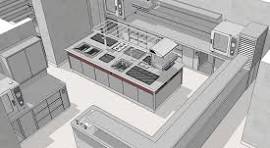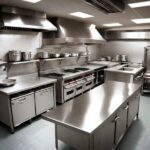Discover the essential elements of a commercial kitchen layout design. Learn how to optimize your space for efficiency and productivity. Click to learn more.
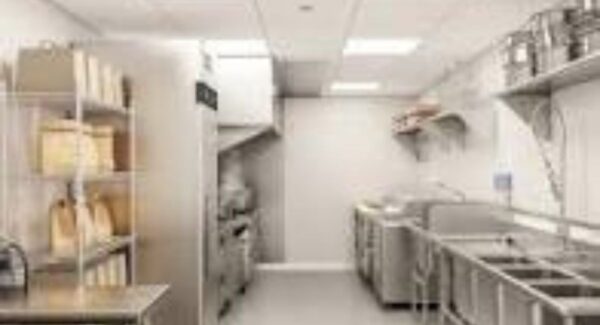
Designing a commercial kitchen layout is no small feat. It’s the heartbeat of any successful restaurant, dictating efficiency, safety, and ultimately, the quality of food and service.
Whether you’re opening a new eatery or revamping an existing space, getting the layout right is crucial. So, let’s dive into the essentials of crafting the perfect commercial kitchen layout.an work smoothly and efficiently. It also directly impacts the speed of service and food quality, which are key to customer satisfaction..
Understanding the Importance of a Commercial Kitchen Layout
Why is a good kitchen layout so vital? Imagine trying to cook a meal in a cluttered, disorganized home kitchen. Now, multiply that chaos by ten.
A well-planned commercial kitchen layout optimizes space, streamlines workflow, and enhances safety, ensuring that chefs and staff can work smoothly and efficiently.
It also directly impacts the speed of service and food quality, which are key to customer satisfaction.
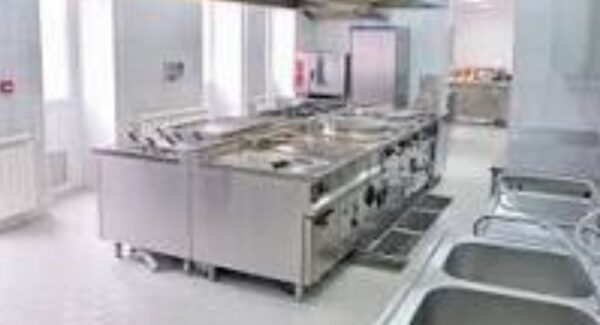
Key Elements of a Functional Kitchen Layout
Before we get into specific commercial kitchen layout design types, let’s look at the fundamental elements every commercial kitchen needs:
Preparation Area:
Space for washing, cutting, and mixing ingredients.
Cooking Area:
Includes stoves, ovens, and fryers.
Storage Area:
For ingredients and kitchen supplies.
Service Area:
Where finished dishes are plated and ready to be served.
Cleaning Area:
Sinks and dishwashers for handling dirty dishes and utensils.
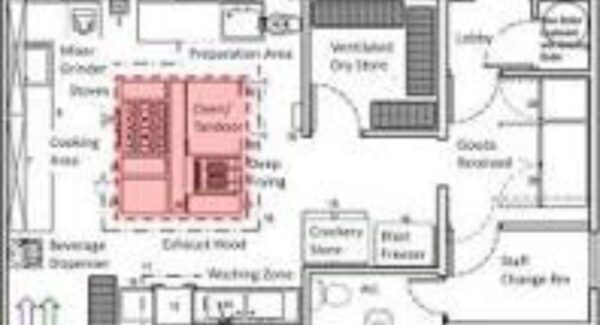
Types of Commercial Kitchen Layouts
There are several tried-and-true kitchen layouts, each with its own set of advantages. Here’s a closer look at the most common ones:
Assembly Line Layout
Perfect for establishments with a high volume of similar orders, like fast-food restaurants. The workflow moves in a linear path from preparation to cooking to plating.
Island Layout
Ideal for larger kitchens, this layout features a central island where cooking or preparation happens, surrounded by other stations. It promotes easy communication and movement.
Zone-Style Layout
This layout divides the kitchen into zones for different tasks, such as prep, cooking, and cleaning. It’s great for restaurants with a varied menu, allowing specialized teams to work concurrently without interference.
Galley Layout
Efficient for small spaces, the galley layout places two parallel workspaces with a central aisle. It’s cost-effective and maximizes the use of limited space.
Open Kitchen Layout
A popular choice for trendy restaurants where the cooking process is part of the dining experience. It encourages transparency and interaction between chefs and diners.
Planning Your Commercial Kitchen Layout
Crafting your layout requires careful planning. Here’s what you need to consider:
Assessing Space and Requirements
Measure your kitchen space and list your requirements. Think about the type of cuisine, volume of orders, and peak service times to determine your needs.
Workflow Efficiency
Design your layout to support a logical workflow. Ingredients should flow from storage to prep to cooking to plating seamlessly.
Compliance with Health and Safety Regulations
Ensure your kitchen meets all local health and safety regulations. This includes proper ventilation, fire safety measures, and sanitary conditions.
Equipment Placement
Strategically place equipment to minimize movement and maximize efficiency. Frequently used items should be easily accessible.
Future-Proofing Your Design
Consider your future needs. Will you need to expand or adapt your menu? Design a layout that can evolve with your business.
Common Mistakes to Avoid
When designing your kitchen, avoid these common pitfalls:
Overcrowding:
Too much equipment in a small space can hinder movement.
Poor Ventilation:
Inadequate ventilation can lead to heat buildup and health issues.
Ignoring Workflow:
Disorganized layouts disrupt the cooking process and slow down service.
Underestimating Storage Needs:
Insufficient storage can cause clutter and inefficiency.
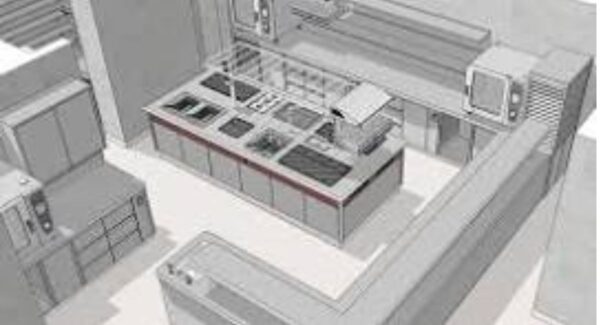
Tips for Optimizing Your Commercial Kitchen Layout
Prioritize Accessibility
Make sure everything you need is within arm’s reach. This includes utensils, ingredients, and equipment. Easy access reduces time wasted moving around.
Enhance Communication
An open layout can improve communication among staff, reducing errors and speeding up service. Consider sight lines and ease of verbal exchange when planning.
Implement Smart Storage Solutions
Maximize vertical space with shelves and hooks. Use labeled bins and containers to keep everything organized and easy to find.
Invest in Quality Equipment
High-quality, reliable equipment might be costly upfront but saves money and headaches in the long run. Durable appliances reduce downtime and repair costs.
Conclusion
A well-designed commercial kitchen layout is essential for operational success. It enhances efficiency, safety, and the quality of your culinary creations.
By understanding the different types of layouts and following best practices, you can create a kitchen that not only meets your current needs but is also adaptable for future growth. Happy cooking!
If you have not yet read the article Mastering the Art of Commercial Kitchen Design, then you must read that also.
FAQs
What is the most efficient kitchen layout for small spaces?
The galley layout is often the best for small spaces due to its efficient use of available area and streamlined workflow.
How can I ensure my kitchen layout complies with health regulations?
Consult local health department guidelines, ensure proper ventilation, and maintain sanitary conditions. Hiring a professional can also help ensure compliance.
What are some tips for improving kitchen workflow?
Prioritize accessibility, organize storage, and ensure clear communication lines. Streamline the process from prep to plating.
How important is equipment placement in a kitchen layout?
Equipment placement is crucial for minimizing movement and maximizing efficiency. Frequently used items should be easily accessible to save time.
Can I change my kitchen layout after it’s been set up?
Yes, but it can be costly and disruptive. Planning for future needs during the initial design phase can save time and money in the long run.
